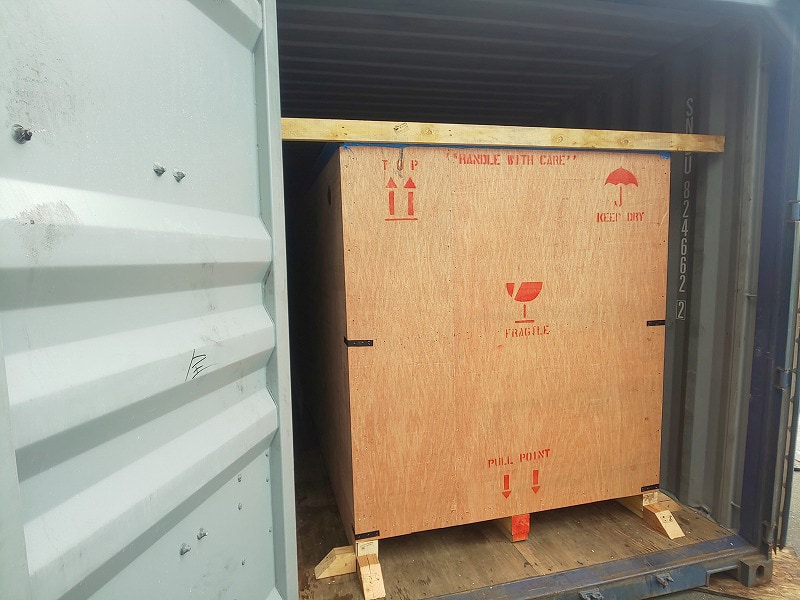Have you ever had the experience of exporting a product to a foreign country only to have it malfunction upon arrival?
The causes include solder cracks in precision machinery, poor plug contact in electronic components, cracks in piping joints when transporting liquids, and loose bolts and nuts.
However, there is a common factor behind these problems: the constant band vibration that occurs intermittently during transportation.

Although we may not be aware of this on a daily basis, cargo is constantly subjected to detailed and diverse frequencies of vibrations from various transportation modes such as trucks, ships, and airplanes during the cargo transportation process.
This complex vibration, although so minute that it is invisible, is repeated over a long period and gradually adversely affects the fragile parts of the product.
For example, fine solder joints of electronic components may eventually crack because of metal fatigue caused by repeated vibrations.
The plugs can also become slightly misaligned because of vibrations, resulting in poor contact.
Piping joints, bolts, and nuts are also prone to loosening owing to vibration, which can lead to serious problems such as liquid leaks and parts falling off.
Protecting Cargo from Vibration: Importance of Packaging
Therefore, what measures are required to protect valuable cargo from this invisible vibration?
Proper packaging is one of the most important issues.
To minimize the effects of vibration in the transportation scene, it is essential to use sufficient cushioning material between the cargo and outer box.
The appropriate placement of air caps, styrofoam, or cardboard spacers prevents vibrations during transportation from being transmitted directly to the product.

It is also important to secure the moving parts inside the product to prevent the cargo from becoming a source of vibration.
If necessary, we need to take measures such as packing products individually or using bands or cushioning materials for securing the cargo.
Additionally, it is useful to consider transportation methods and routes.
Selecting a means of transportation with less vibration, or a route that is considered to have relatively low vibration, is also an important factor in reducing cargo damage.
Transit problems in the import/export business can lead to unexpected costs and delivery delays.
To protect the cargo from the hidden enemy of vibration, review your packing methods and build a safer and more reliable transportation system.
We have developed innovative anti-vibration products that cover a wide range of frequency bands and can be used in a variety of transportation modes.
Please do not hesitate to contact us for easy-to-understand proposals on packaging design, safety, and cost advantages that align with your product.
Antivibration pallet

Anti-vibration railroad container floors

